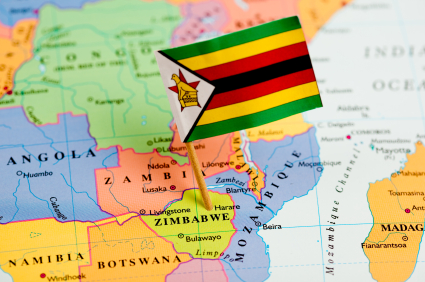
The hallmark of Zimbabwe’s economic collapse is hyperinflation. The most recent official inflation figure is for February 2008: a whopping 165000% year-on -year.
But in June, inflation was unofficially about 2.5-million percent a year. Not surprisingly, the Zimbabwe dollar has lost more than 99.9% of its value against the US dollar during the past year.
Zimbabwe’s hyperinflation is destroying the economy, pushing more of its inhabitants into poverty, and forcing millions of Zimbabweans to emigrate. Between 1997 and 2007, cumulative inflation was nearly 3.8-billion percent, while living standards fell by 38%.
The source of Zimbabwe’s hyperinflation is the Reserve Bank of Zimbabwe’s money machine. The government spends, and the RBZ finances the spending by printing money.
The RBZ has no ability in practice to resist the government’s demands for cash. Accordingly, the RBZ cannot hope to regain credibility any time soon. To stop hyperinflation, Zimbabwe needs to immediately adopt a different monetary system.
Central banking is the only system that has ever created hyperinflation and instability in Zimbabwe.
Any one of three alternatives can rapidly slash the inflation rate and restore stability and growth to the economy.
The first is “dollarisation” — replacing the discredited Zimbabwe dollar with a foreign currency, such as the US dollar or the rand.
The second is a currency board. Under such a system, the Zimbabwe dollar would be credible because it would be fully backed by a foreign reserve currency and would be freely convertible into the reserve currency at a fixed rate on demand.
The third is free banking — allowing commercial banks to issue their own private notes and other liabilities with minimum government regulation.
Any one of these systems, or a combination of them, could be implemented immediately, without preconditions, and would therefore quickly put an end to hyperinflation and produce stable money.
Financial liberalisation is a vital companion to dollarisation, free banking, or a currency board.
With the elimination of hyperinflation, the rationale for price controls and foreign exchange controls no longer exists. Both should be prohibited.
Other forms of “financial repression”, including interest rate ceilings, the forced purchase of government bonds, minimum reserve requirements for financial institutions, and the compulsory allocation of credit to favoured borrowers, should also be prohibited.
This liberalisation would permit the free flow of capital to and from Zimbabwe. It would also increase the return on savings and reduce the cost of capital, removing major impediments to economic growth and improved living standards.
Such has been the experience of other countries that have ended financial repression.
In Zimbabwe, the depreciation of assets has been exceeding investment for some time, resulting in capital consumption and the atrophy of the nation’s plant and equipment. In addition, the combination of hyperinflation and price controls has wiped out much of the country’s stock of working capital.
The quickest way to replenish capital stock is to import capital. To accomplish this, stable money and a liberal financial regime are prerequisites.
Prior to the introduction of central banking to then Southern Rhodesia early in the 20th century, the country had a rich monetary experience in which a free banking system and a currency board system performed well.
It is time for Zimbabwe to adopt one of these proven monetary systems and discard its failed experiment with central banking.
Author Steve H. Hanke

0 responses on "Kill Central Bank to Fix Inflation in Zimbabwe"